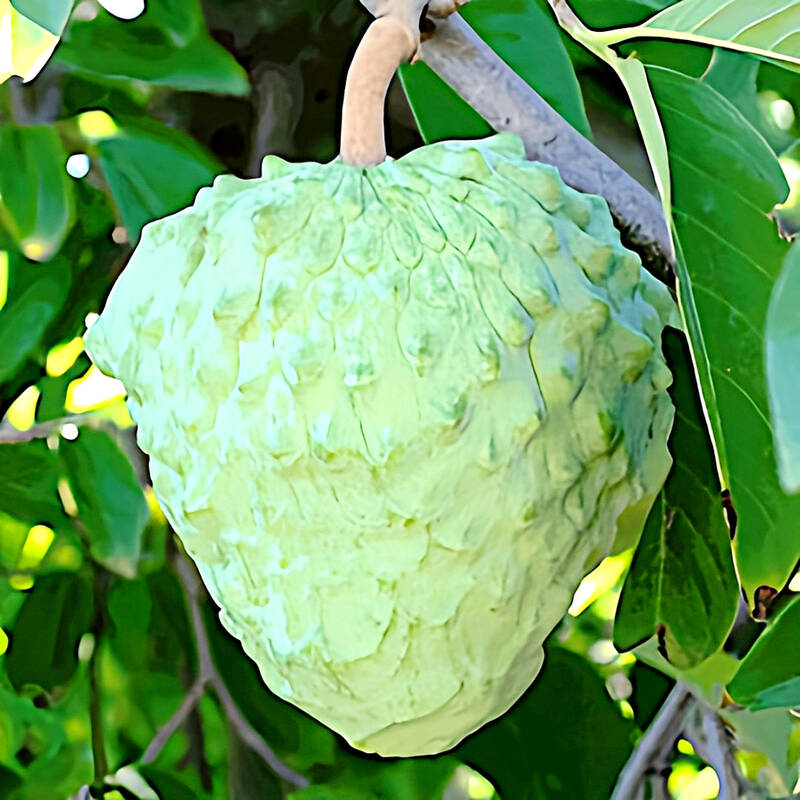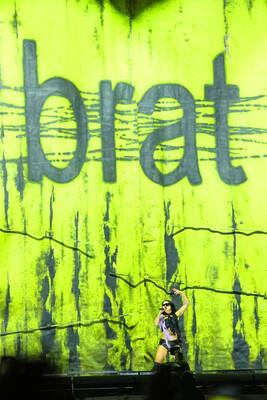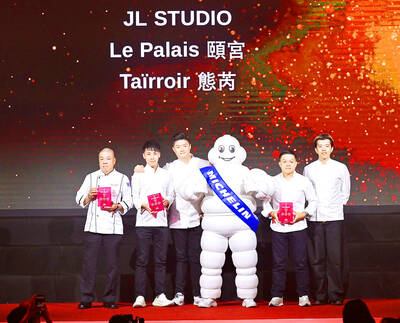中國海關總署突然發布通知,指台灣輸入的釋迦及蓮霧檢出介殼蟲「大洋臀紋粉蚧」,決定暫停輸入。
In September 2021, China’s customs administration announced that it would suspend imports of sweetsop and jambu from Taiwan, citing discoveries of Planococcus minor, a type of mealybug.
蓮霧 (jambu/champoo, Syzygium samarangense) ,又名洋蒲桃,是桃金孃科熱帶水果,原產於印尼和馬來西亞,在星、馬稱作水蓊,中、港、澳稱作天桃。

Photo: Bookman l 圖片:書林提供
蓮霧學名中的種小名 samarangense,係因模式標本採自印尼的Semarang (三寶瓏) 而得名。
蓮霧馬來語稱為 jambu air,第二個字 air讀作 /?a??(r)/,是水的意思,荷蘭人從印尼引進台灣,台語音譯為蓮霧 ian-b?。
以往蓮霧常見譯為 wax apple,聽起來好像素描靜物用的蠟製水果 (Wax Fruit),曾有人問美國朋友要不要吃蓮霧? Care for a wax apple? 對方回一句:Why not a real one? 近來美國市場流行泰語的講法 champoo。蓮霧果實長得像鈴鐺,因此又稱為 bell-fruit。

Photo: Bookman l 圖片:書林提供
Syzygium samarangense is a tropical fruit in the family Myrtaceae, native to the Greater Sunda Islands and the Malay Peninsula. Common names in English include champoo, jambu, bell fruit, rose apple, Java apple, and wax apple. In Taiwan, the dark red cultivars are nicknamed “Black Pearl” or “Black Diamond.”
The skin of the jambu is quite waxy. When you cut the fruit open, you won’t find a seed-filled core. Instead, the core of a jambu is hollow, with a bit of cottony fluff.
Jambus are eaten skin and all (帶皮吃). The texture is somewhere between a watermelon and an apple, as is the taste.
釋迦 (Annona squamosa) 英文叫 sweetsop 或 sugar apple,原產於熱帶美洲,16 世紀航行於中國、菲律賓與墨西哥之間的西班牙船隊 Manila galleons 引入亞洲,傳到中國,因果皮似荔枝般有粒狀突起,故稱為「番荔枝」。
Sweetsop/sugar apple is native to the tropical regions of the Americas and the West Indies. Spanish traders on Manila galleons brought it to Asia.
在台灣,「釋迦」係荷蘭人自印尼引進,因印尼語為 srikaya,發音接近「釋迦雅」,加上果皮有突起鱗目 (a rind composed of knobby segments),似釋迦牟尼佛頭髻,所以台語稱之為「釋迦」。
鳳梨釋迦英文叫 atemoya,為傳統釋迦與秘魯釋迦之雜交種 (Annona squamosa × Annona cherimola),1908年於美國佛羅里達州人工雜交育成。
馬來文裡傳統釋迦叫 buah nona,nona 指釋迦類的水果。台灣改良的鳳梨釋迦品質超好,因此馬來西亞的果販特別幫它取個響亮的英文名字 Formosa nona 來行銷。
The atemoya is a hybrid of cherimoya (Annona cherimola) and the sweetsop (Annona squamosa), both of which are native to the American tropics. Hybridization was performed by P. J. Webster in Florida in 1908.
Taiwan-grown atemoya is of the highest quality — creamy and juicy. In Malaysia, vendors give it a catchy market name, “Formosa nona,” to attract customers.
文章由書林出版公司提供:
www.bookman.com.tw
蘇正隆 — 台灣翻譯學學會前理事長、師大翻譯研究所兼任副教授; 編著《走讀自然.花言樹語》,《英語的對與錯》,《世紀病毒:必讀防疫英文知識與詞彙》...等。國家教育研究院中英雙語詞彙審議委員;研究領域為翻譯、術語及詞典編譯,從事植物與人文導覽數十年,亦曾應邀遠赴國外大學做植物人文導覽。

If you think you’re cool and know all the latest trends, then here’s a question for you: What does the word “brat” mean? If you said something like, “a child who behaves badly or is annoying or rude,” you might not be as hip as you think. This four-letter word now has a new definition that has become quite popular. Its popularity caught the eye of Collins Dictionary, which crowned it as “Word of the Year 2024.” According to this new meaning of brat, it is used as an adjective to describe someone who has a confident, independent, and hedonistic

A: Seeing as the 2025 Michelin Guide extended to New Taipei City and Hsinchu City and County, it’s hard to believe that none of the restaurants won a Michelin star. B: Some fine establishments — like Hsinchu’s A Cut steakhouse — surely deserve the honor. A: Michelin-starred restaurants have good quality food, but some of them are so pricey. B: I once had barbeque pork at a starred restaurant that set me back NT$4,800. That’s even higher than my weekly food budget. A: No wonder several of them have closed down recently, as high prices and the tariff war are scaring off

A: The Michelin Guide Taiwan announced the 2025 Bib Gourmand eateries and starred restaurants last week. B: What were the highlights this year? A: In addition to Taipei, Taichung, Tainan and Kaohsiung, New Taipei City and Hsinchu City and County were included for the first time. B: As a New Taipei resident, I can’t wait to try all the awarded local delicacies. Should we start from the more affordable Bib Gourmand selection? A: Sure, New Taipei and Hsinchu each boast 15 Bib Gourmand eateries now, including some famous establishments such as San Tung restaurant. A: 2025《米其林指南》近日公布「必比登推介」和星級餐廳。 B: 今年的名單有哪些亮點? A: 除了台北、台中、台南、高雄,今年加入新北、新竹縣市! B: 身為新北人,我真想吃遍當地的美食,我們要不要從平價的必比登先開始? A: 好啊新北、新竹各有15家入選必比登,像山東小館等知名餐廳都有上榜唷。 (By Eddy Chang, Taipei Times/台北時報張迪)

Continued from yesterday(延續自昨日) https://www.taipeitimes.com/News/lang Interestingly, one of the words Collins Dictionary discarded was selected by Oxford University Press (OUP) for its own Word of the Year. On its Web site, the publishing house of the University of Oxford stated it had conducted a public poll in which over 37,000 people participated. The voters, along with OUP’s language experts, settled on the term “brain rot.” One main reason for the decision was the vast amount of interest in the noun during 2023 and 2024, with its usage increasing by 230 percent. In fact, brain rot is not a new term by any